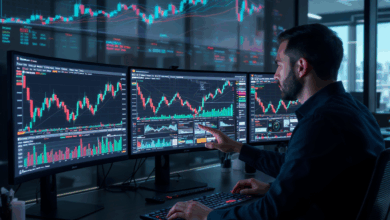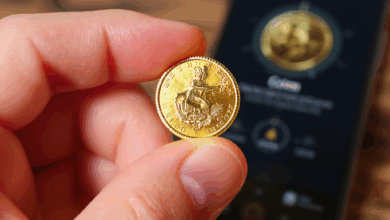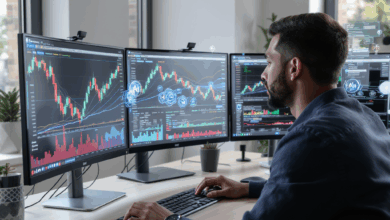When AI Predicts Gold – Are We Ready for the New Crystal Ball?
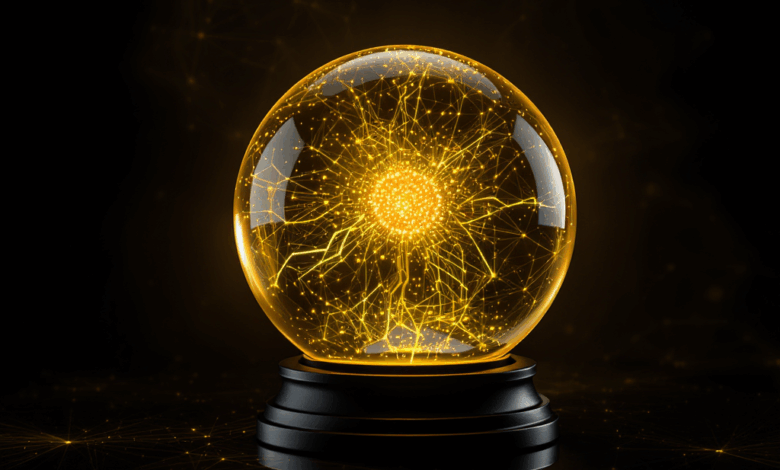
Have you ever wondered if a machine could peer into the future more accurately than seasoned investors? I recently stumbled upon a fascinating development—AI models that don’t just crunch numbers but seem to grasp the pulse of gold prices with an almost uncanny precision. This isn’t science fiction; it’s happening now, quietly transforming the landscape of investment.
Imagine a hybrid of neural networks—like CNNs and Bi-LSTMs—working together to decode patterns hidden deep within mountains of financial data, economic indicators, and even the emotional undertones captured from news and social media. It’s as if these models are weaving a story from the chaos of markets, striving to predict where gold, a symbol of stability, will head next.
Yet, this brings me to a puzzling thought: can the cold logic of AI truly capture the human hopes, fears, and irrational behaviors that often sway gold prices? Recent research I’ve come across highlights impressive accuracy improvements, but also a growing emphasis on making these AI models more interpretable. Investors aren’t just looking for predictions; they want to understand the “why” behind them.
This trend isn’t just about better tools; it’s about a shift in how we relate to uncertainty and value. As these AI models offer real-time forecasts, they could redefine strategies, risk management, and even the very meaning of market trust. But are we ready to hand over the crystal ball to algorithms?
What does it mean for you, sitting on the edge of this technological wave? Could embracing AI-driven forecasts be your key to navigating the volatile gold market, or does it risk oversimplifying the complex dance of global economics and human sentiment?
As we stand at this crossroads, the question isn’t just about technology’s capability, but about our willingness to rethink age-old notions of prediction and control. So, what do you think—is this the dawn of a new era in investment, or just another fleeting trend? Let’s explore this unfolding story together.
When I first heard about AI models diving into the labyrinth of gold price forecasting, I couldn’t help but feel a mix of intrigue and skepticism. Gold, after all, has long been a barometer of human anxiety and hope—a metal entwined not just with economics but with emotion. Could an algorithm truly grasp this duality? As I peeled back the layers of recent innovations, the picture grew both clearer and more complex.
The rise of hybrid AI architectures, like those combining Convolutional Neural Networks (CNN) with Bidirectional Long Short-Term Memory (Bi-LSTM) networks, caught my attention immediately. These models don’t just process data; they seem to uncover hidden spatial and temporal patterns that traditional methods often overlook. It’s fascinating to see how CNNs, typically used for image recognition, are repurposed here to detect intricate features in financial time series data, while Bi-LSTMs capture dependencies both forward and backward in time. This marriage of techniques signifies a leap beyond the usual forecasting toolbox, hinting at a deeper understanding of the market’s rhythm.
But the story doesn’t stop at model architecture. The real magic seems to happen when these AI systems ingest a rich tapestry of data—technical indicators, macroeconomic variables, and even the sentiments swirling through news headlines and social media chatter. Imagine an AI that not only reads price charts but also senses the collective mood of investors worldwide. Recent studies, such as those published in finance-focused journals, emphasize how this data fusion elevates predictive power, acknowledging that markets are as much about psychology as numbers. Yet, this raises the question: how reliable is sentiment analysis when emotions can be so fleeting or manipulated? The challenge of capturing the true ‘pulse’ behind the data remains an open puzzle.
Then there’s the advent of transformer-based models like TimeGPT, which bring the cutting-edge of natural language processing into time series forecasting. Their ability to model long-term dependencies without the bottlenecks of older recurrent networks is impressive. This advancement translates into more timely and accurate predictions, a boon for investors who need to act quickly. Some sources even highlight the emergence of real-time forecasting capabilities, which could revolutionize high-frequency trading and portfolio management.
However, as these models grow more complex, their interpretability becomes a critical concern. It’s one thing to receive a forecast; it’s another to understand the rationale behind it. Investors, after all, crave transparency—knowing not just the ‘what’ but the ‘why.’ Techniques like attention mechanisms are being explored to shed light on the decision-making process within these AI systems, attempting to bridge the gap between black-box models and human intuition.
I find myself pondering the broader implications of this trend. Are we witnessing a fundamental shift in how we confront uncertainty? Gold has traditionally been a refuge during turbulent times, a tangible asset embodying trust. Now, with AI models offering seemingly precise forecasts, are we outsourcing our faith to algorithms? Moreover, as these tools become more accessible, will they level the playing field for individual investors, or simply widen the gap between those who can harness such technology and those who cannot?
For those of us watching from the sidelines—or perhaps poised to dive in—the practical takeaway seems clear: embracing AI-driven forecasting demands careful consideration. Selecting the right model means balancing complexity, data quality, and interpretability. The computational intensity of hybrid models like CNN-Bi-LSTM is nontrivial, and keeping data fresh and comprehensive is a constant task. Continuous monitoring and updating are essential to adapt to the ever-shifting market landscape.
In the end, perhaps the true question isn’t just about the accuracy of AI forecasts but about how we integrate these tools into our human frameworks of decision-making and trust. Can we maintain a healthy skepticism while leveraging the power of machine learning? How do we ensure that the art of investing—the intuition, the risk-taking, the emotional intelligence—doesn’t get lost amid the algorithms?
So, where does this leave us? Are AI models the new oracle for gold prices, or simply another layer in the complex dance between data and human sentiment? As we stand at this intersection of technology and tradition, I invite you to reflect: how might these advances reshape your own approach to uncertainty and value? And as we watch this story unfold, what new questions will emerge about the nature of prediction itself?
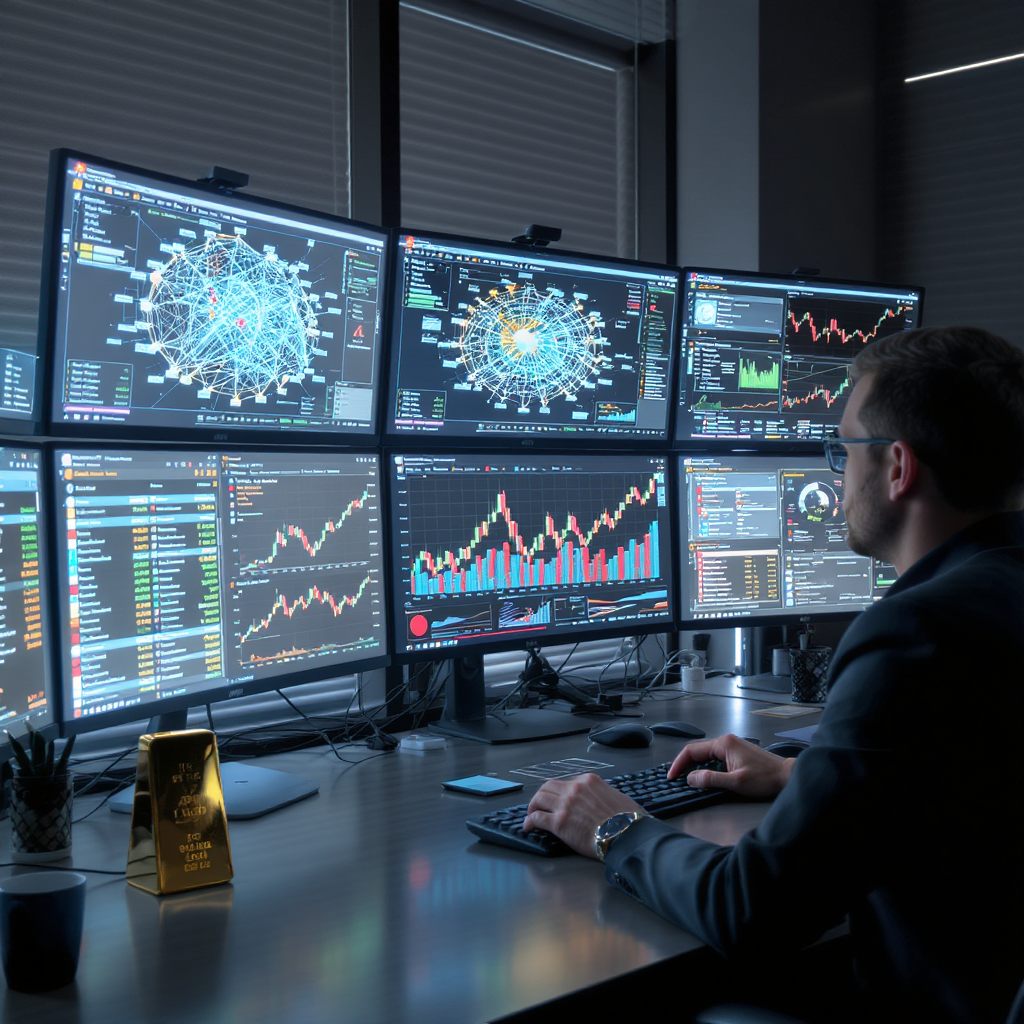
Reflecting on the evolving landscape of gold price forecasting through AI, it’s clear we’re witnessing more than just a technological upgrade—it’s a subtle transformation in how we engage with uncertainty itself. These advanced AI models, blending neural networks with sentiment analysis and real-time data, suggest a future where predictions might feel less like guesswork and more like informed narratives crafted from countless invisible threads. Yet, this doesn’t erase the human elements—the hopes, fears, and instincts—that have long shaped gold’s allure.
For those of us intrigued by this fusion of machine intelligence and market dynamics, the value lies not only in improved forecast accuracy but in the opportunity to rethink our relationship with risk and trust. Embracing these tools means stepping into a dialogue where interpretability matters as much as precision, and where skepticism and openness coexist.
What can you do now? Start by exploring AI forecasting tools cautiously, focusing on those that offer transparency and allow you to understand their reasoning. Stay informed about ongoing research and emerging models like TimeGPT, which promise enhanced responsiveness. Most importantly, blend these insights with your own intuition and market experience—remembering that no algorithm can fully capture the complexity of human sentiment.
Looking ahead, AI-driven forecasting may well democratize access to sophisticated investment strategies, leveling the playing field for individual investors while challenging traditional notions of market wisdom. But it also invites us to question how much control we’re willing to entrust to algorithms, and how we preserve the art of investing amid this transformation.
So, as we stand at this intriguing crossroads, I wonder—how will you navigate this new era? Will AI models become your compass through the volatility, or will you chart a path that keeps human insight at the helm? The story is unfolding, and your perspective could shape what comes next. What do you think?


